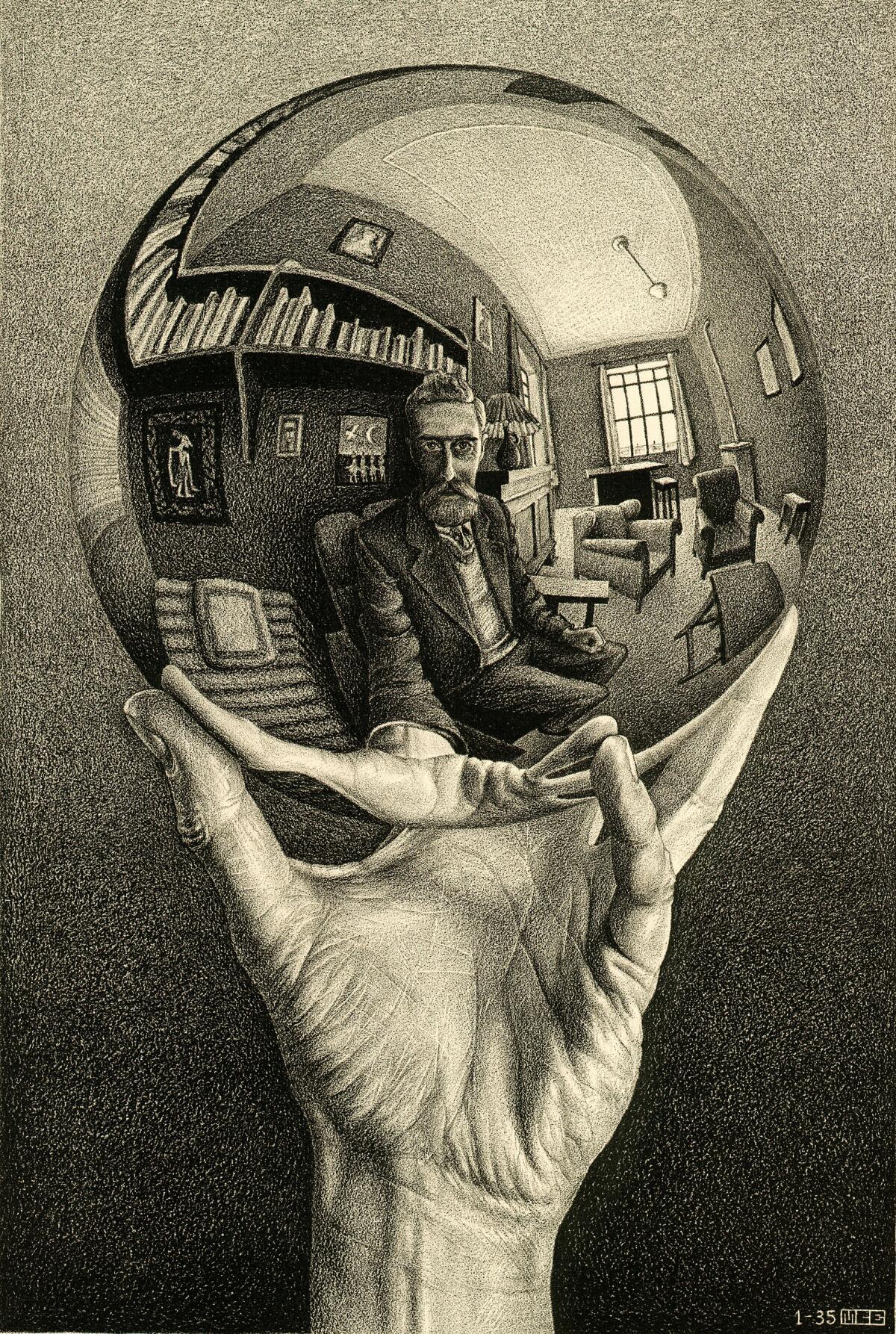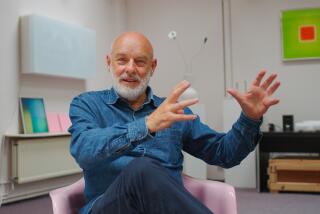Review: The accidental psychedelic artist: ‘M.C. Escher: Journey to Infinity’

“M.C. Escher: Journey to Infinity” succeeds where so many documentaries about artists fail: It provides real insight into the art. It’s a welcome trip for those fascinated by his iconic, mind-bending depictions of illusions, evolutions and eternal cycles.
Escher (1898-1972) once mused only he could make a “really good movie” about his works. Director Robin Lutz honors that in a way by attempting a subjective journey through the Dutch graphic artist’s life (aided by the Escher Foundation), using actor Stephen Fry‘s readings of Escher’s writings to illuminate his thinking as his style developed. It helps that Escher left behind such roadmaps into the maze of his mind in letters and lectures, sometimes describing exactly what he was after in this tessellation or that paradoxical staircase, but the film skillfully joins those thoughts with the art cinematically.
Lutz judiciously uses animation to extend Escher’s works or bring them to life to illuminate the artist’s intent, such as his quest to depict infinity. That’s risky stuff, so boldly interpreting someone else’s art (writes the critic), but Lutz pulls it off with aplomb.
There are intriguing quotes, such as Escher’s protestation that he’s not an artist, but a mathematician, despite having produced “448 lithographs, woodcuts and wood engravings and more than 2,000 drawings and sketches,” according to his official site. Here’s his inspiration to replace repetitive geometric shapes with those found in nature — diamonds evolving into birds and fishes in his drawings. There’s his puzzlement over why his images, ruled by the logic of nature, should be embraced by the drug-taking, psychedelic generation. Here’s his acknowledgment of his love of Bach being rooted in a kind of mathematical sympathy.
“Journey to Infinity” convincingly draws direct connections between Escher’s experiences and his work. The filmmakers found the precise landscape or architectural views he so painstakingly recreated in his drawings, later incorporating some into mind-bending visuals. The tiles in the Alhambra, which Escher described studying, for instance, transform into some of his well-known tessellations.
There is less in the documentary about the man than the artist. There are, however, touching tidbits of his early courtship of the woman he would marry, then sad notes on her late-emerging mental illness and the deterioration of the marriage. There are also stories of his opposition to the rise of fascism and Nazism: his son telling of the family’s departure from Italy to prevent the boy from becoming too infatuated with Mussolini; the artist going to the home of one of his Jewish mentors and finding him taken, one of the man’s prints on the floor with the pattern of a soldier’s bootprint on it.
Escher lamented, even as he made breakthroughs in his unique expression of the paradoxical order of the natural world, that he was speaking a language few would understand. Yet in an expression of the maxim that talent does what it can but genius does what it must, he also said, “I’m too stupid to live as a scientist, but I’m not an artist, either.”
'M.C. Escher: Journey to Infinity'
Rated: No rating
Running time: 1 hour, 21 minutes
Playing: Starts Feb. 5, Laemmle Virtual Cinema
More to Read
Only good movies
Get the Indie Focus newsletter, Mark Olsen's weekly guide to the world of cinema.
You may occasionally receive promotional content from the Los Angeles Times.







